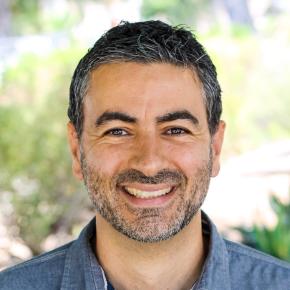It’s often said that if you repeat something loud enough and long enough, people will begin to believe it. Such is the case with the claim that 10% of the population is homosexual. Though it’s commonly believed, the figure is rarely questioned.
The media only contributes to the problem. It seems like every movie and television show includes the obligatory homosexual character(s). It’s no surprise, then, that American perception of the prevalence of homosexuality is skewed. A Gallup poll in 2002 found that Americans estimated the percentage of homosexuals to be 21.5% of the population, a startling number that would even shock pro-gay advocates!
The origin of the 10% statistic is from a 1948 book by Alfred Kinsey called Sexual Behavior in the Human Male. Kinsey concluded from his research that “10 percent of the males are more or less exclusively homosexual for at least three years between the ages of 16 and 55.”[1]
But just who are “the males” in Kinsey’s research? It turns out that his sample population contained a high percentage of convicted criminals, sex offenders, and male prostitutes. To no one’s surprise, many researchers were critical of his conclusions since his test subjects didn’t represent the broader population. The American Statistical Association blasted his sampling procedure the same year his book was published. One of their committee members, Princeton mathematician John Tukey, wrote, “A random selection of three people would have been better than a group of 300 chosen by Mr. Kinsey.”
Clearly the 10% figure isn’t credible, but accurately estimating the homosexual population can be elusive. One problem is how you determine who is “homosexual.” Do only lifelong homosexuals fit the definition? Should people who have had a single homosexual encounter be included? Does someone who experiences homoerotic dreams count? How one defines “homosexual” affects the prevalence estimate.
But even with this problem, many studies give a lower estimate than the touted 10% Kinsey figure. The Alan Guttmacher Institute, a group that’s affirmative of homosexuality, found only 2.3% of 3,321 males reported homosexual contact in the previous 10 years.[2] A later study of 93,311 women in the Archives of Family Medicine found only 1.4% ever had sex with another woman as an adult.[3]
Most recently, however, was a UCLA study by the Williams Institute on Sexual Orientation and Gender Identity that incorporated and analyzed data from previous prevalence studies. Gary J. Gates, the author of the study and a Distinguished Scholar at the UCLA School of Law, found 1.7% of the adult population identified as either gay or lesbian.[4]
You’d think that now that the 10% figure has been debunked, pro-gay groups would apologize for the misrepresentation and offer scientifically defensible estimates. But they don’t. Instead, they admit they knew the figure was inaccurate, but used it to advance their cause anyway. Tom Stoddard, former member of the Lambda Legal Defense Fund, said, “We used the figure…to create an impression of our numerousness.”[5]
Jill Harris, of the AIDS Coalition to Unleash Power, said “I think people probably always did know that it was inflated. But it’s a really nice number that you could say, ‘one-in-ten,’ and it’s a really good way to get people to visualize that we are here.”
In an Oxford University Press publication, Bruce Voeller admitted that he “campaigned with gay groups and in the media across the country for the Kinsey-based finding that ‘We are everywhere.’ And after years of our educating those who inform the public and make its laws, the concept that 10 percent of the population is gay has become generally accepted ‘fact’…As with so many pieces of knowledge and myth, repeated telling made it so.”[7]
Regardless of the actual percentage of homosexuals in the population, it’s not relevant to our obligation to “get along and be more tolerant.” Even if there were only ten homosexuals in the country, it would still be virtuous for Christians to tolerate (in the accurate sense of the word) them. The number is irrelevant for that purpose.
But tolerance shouldn’t be our goal. Christians shouldn’t aspire to treat homosexuals the way the secular culture treats them. We fail if we do. Instead, we should treat them better. That doesn’t mean we advocate for gay rights or pitch their agenda. It just means we love them better than they’re loved by the world. That’s the first step in transforming our relationship with them for the sake of transforming their relationship with God.
[1] Alfred Kinsey et al., Sexual Behavior in the Human Male (Philadelphia: W.B. Saunders Company, 1948), 651.
[2] John O.G. Billy, et al., “The Sexual Behavior of Men in the United States,” Family Planning Perspectives, Alan Guttmacher Institute, March/April 1993.
[3] Barbara G. Valanis, et al., “Sexual Orientation and Health: Comparisons in the Women’s Health Initiative Sample,” Archives of Family Medicine, 9:843-853, September/October 2000, pp. 844.
[4] Gary J. Gates, “How many people are lesbian, gay, bisexual, and transgender?” The Williams Institute, April 2011.
[5] “How Many Gays Are There?” in Newsweek, February 14, 1993.
[6] “Gay Rights, Special Rights,” Jeremiah Films, Inc. 1993; quoted in Mike Haley, 101 Frequently Asked Questions about Homosexuality, (Eugene, Oregon: Harvest House Publishers, 2004), 178.
[7] Bruce Voeller, “Some Uses and Abuses of the Kinsey Scale,” Homosexuality, Heterosexuality: Concepts of Sexual Orientation, (Oxford University Press, 1990), pp. 35-36.

